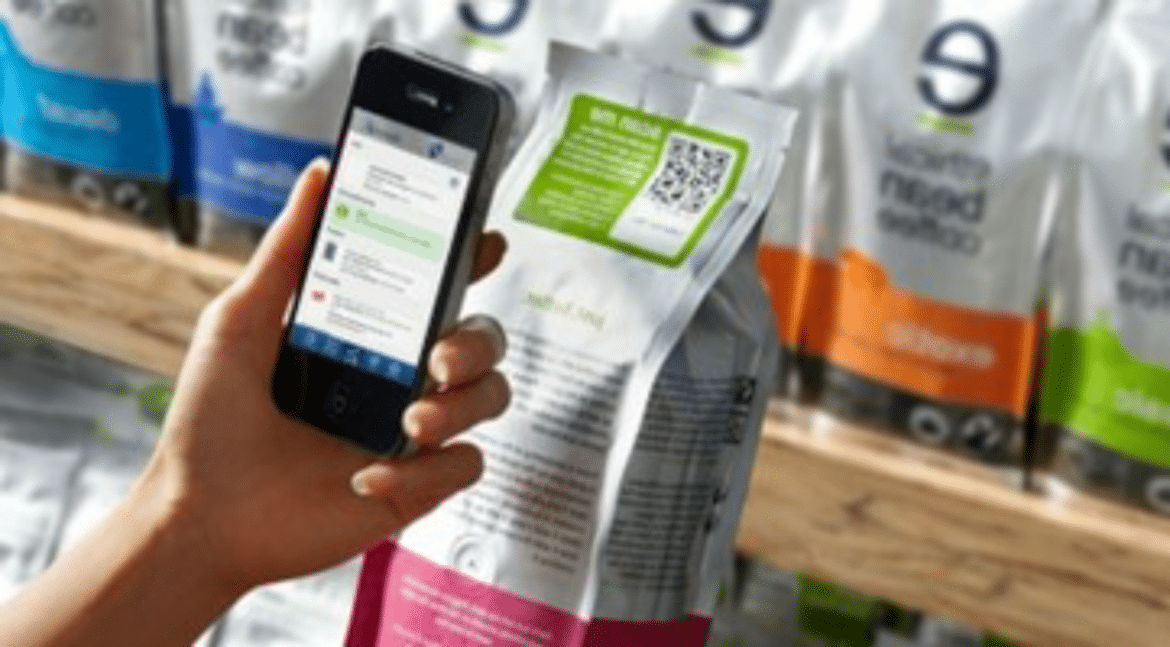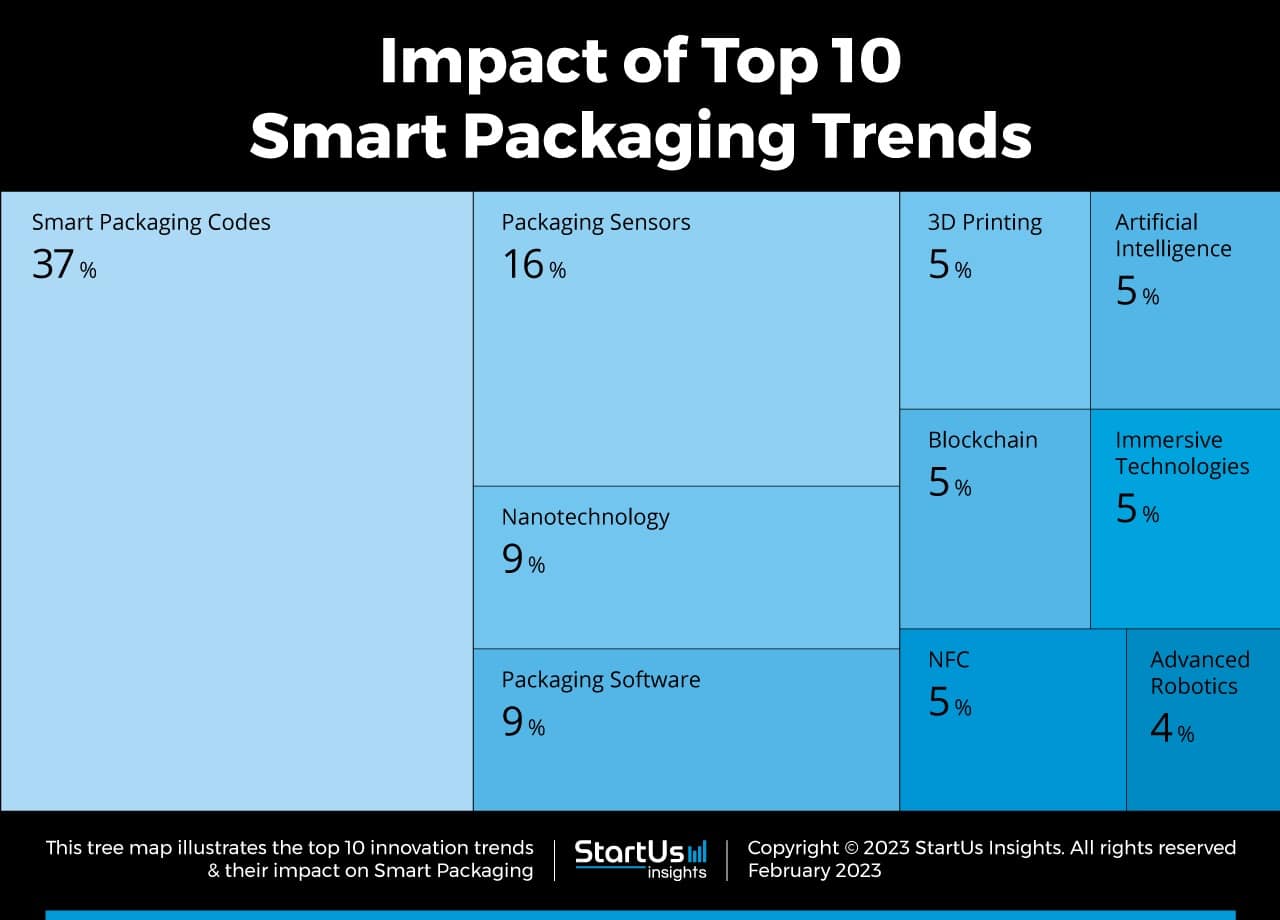In today’s rapidly evolving food industry, packaging plays a pivotal role in ensuring food products’ safety, quality, and sustainability.
With technological advancements, a new era of packaging innovation has emerged, characterized by the rise of smart packaging solutions. This article explores the future of smart packaging and its transformative impact on food packaging practices.
A Look at Smart Packaging
Smart packaging, also called intelligent or active packaging, is a term for packaging systems that use cutting-edge technology to monitor, track, and improve the quality and safety of the things they hold.
These technologies enable data collection, analysis, and sharing in real time, letting everyone in the supply chain make smart choices and improve processes.
Importance of Smart Packaging
Smart packaging is changing the way food is packed by solving important problems like keeping food safe, making it last longer, and being able to track where it came from. Smart packaging has many benefits by using technologies like RFID, sensors, and printed electronics, such as
- Better safety for food
- Longer shelf life
- Better transparency and Traceability
Understanding Smart Packaging
Smart packaging includes various technologies and methods, each tailored to different wants and goals. Let’s learn more about the leading technologies that make smart packing possible.
RFID stands for radio frequency identification
Radio waves are used in RFID technology to identify and keep track of things automatically. RFID tags are built into food packaging or attached to goods to automatically identify and track them through the supply chain. RFID technology has several benefits, such as:
- Better management of inventory
- Better visibility of the product
- streamlined operations in the supply chain
Sensors and IoT Integration
Thanks to sensors and the Internet of Things (IoT), smart packaging can gather and send real-time data on temperature, humidity, and product freshness. By monitoring the surroundings and the state of the product, sensors help prevent problems, improve storage, and ensure the quality of the goods.
Printed Electronics and Smart Labels
Printed electronics and smart stickers use conductive inks, sensors, and displays, among other electronic parts, to make packaging materials. These smart labels can do things like give you information about the product, verify your identity, and let you connect with the brand. Smart stickers have several advantages, such as:
- Better Brand Engagement
- Measures to Stop Counterfeiting
- Product information in real-time
Key Technologies Driving Smart Packaging Innovation
Food packaging is changing very quickly. Several key technologies are leading the way in new ideas and shaping the future of smart packaging.
RFID stands for radio frequency identification
RFID technology is an important part of smart packaging because it automatically identifies and tracks goods throughout the supply chain. The RFID tags have unique identifiers and can be attached to packaging or built into goods, making tracking and tracing easy. RFID technology improves the speed and transparency of the supply chain by letting people see in real time how much inventory is on hand, where shipments are, and how authentic products are.
Sensors and IoT Integration
Source: https://www.mdpi.com/1424-8220/21/4/1509
Smart packaging systems have sensors and Internet of Things (IoT) connectivity built in. This lets them collect and analyze real-time data on various environmental and product factors. These sensors can keep an eye on things like temperature, humidity, pH levels, and the makeup of gasses, which gives us important information about the safety and quality of the product. Sensors help keep things from going bad, reduce waste, and ensure they meet quality standards by recognizing changes from the ideal conditions and sending out alerts or taking corrective actions.
Printed Electronics and Smart Labels
Printed electronics and smart labels are new ways to improve the usefulness of packaging and get people more involved with it. These technologies allow electronic parts like sensors, displays, and conductive inks to be built into packing materials.
Smart labels can tell people about a product’s nutritional content, expiration dates, and authenticity, giving them the information they need to make smart buying choices. Interactive elements like QR codes, NFC (Near Field Communication) tags, and virtual reality experiences make people more interested in and loyal to a brand.
Advantages of Smart Packaging in the Food Industry
Smart packaging has many benefits for the food business, such as making food safer, extending its shelf life, and making it easier to track and see what’s inside.
Enhanced Food Safety
One of the main goals of smart packaging is to ensure that food items are safe and intact. Smart packaging systems can monitor important factors like temperature, humidity, and microbial contamination in real-time using RFID, sensors, and smart stickers.
This lets people find possible dangers and changes in safety standards early on so they can immediately stop foodborne illnesses and product recalls.
Smart packaging solutions also make Traceability and transparency easier by giving consumers specific information on where products come from, how they are processed, and how they are handled. This makes consumers even more confident in the safety of food.
Extended Shelf Life and Reduced Food Waste
Smart packing technologies are very important for keeping perishable foods fresh longer and reducing waste throughout the supply chain.
Smart packaging systems can make the best storage conditions that slow down the rate of spoilage and damage by tracking and controlling things like temperature, humidity, and gas composition.
This makes boxed goods last longer, lowers the chance of losing them because they go bad, and lowers the need to throw them away too soon. Smart packaging solutions also allow proactive control of inventory levels, production schedules, and distribution processes, which makes the best use of resources and prevents too much inventory from building up.
Improved Traceability and Transparency
Traceability and transparency are important parts of modern food supply chains because they let everyone see how goods get from the farm to the table and make sure they meet quality standards and government rules.
Smart packaging options improve Traceability by letting you see where a product came from, how it was processed, and how it got to you in real time. Smart packing systems can make complete digital records that track important data at every supply chain step using technologies like RFID tags, blockchain, and cloud-based data analytics.
In the event of a food safety incident or recall, it is easy to find out what happened quickly. This makes targeted recalls easier and limits the size and effect of contamination outbreaks. Innovative packaging solutions also improve openness by giving customers access to specific product information, such as lists of ingredients, nutritional profiles, allergen warnings, and certifications for sustainability.
This gives people the information they need to decide based on their values, preferences, and dietary needs. This increases the demand for food products that are safer, healthier, and better for the environment.
Challenges and Limitations of Smart Packaging
Smart packaging has many benefits for the food business, but it also has some problems that must be fixed before it can be widely used.
Cost and Implementation Challenges
One of the biggest problems with smart packaging is how much it costs to set up and connect to current infrastructure and packaging processes.
Smart package technologies like RFID systems, sensors, and digital platforms can cost a lot to set up, especially for small and medium-sized businesses (SMEs) with little money to spend.
Adding intelligent packaging solutions to current packaging lines and supply chain operations may also take time, work, and technical know-how. This makes the whole process more expensive and complicated. Because of this, many food companies might be hesitant to use smart packaging because they need to know how much money they will make or what the long-term benefits and value they offer are.
Privacy and Security Concerns
Another big problem with smart packaging is that it might pose privacy and security risks when private data is collected, stored, and shared. Smart packing systems create and send huge amounts of real-time data about how products move, how they’re being handled, and how they interact with each other.
This means that there is a chance of hackers getting in and violating privacy. People may be worried about the safety of the personal information that smart packaging-enabled devices and apps gather, such as their purchase history, consumption habits, and location data.
Food companies and their supply chain partners must also put in place strong cybersecurity means to protect themselves from attacks, data manipulation, and fake goods. If these privacy and security issues aren’t properly addressed, consumers may lose trust in smart packaging technologies, making them less likely to be used.
Future Trends and Innovations in Smart Packaging
Source:Smart Insights
Even though there are problems and restrictions, smart packaging keeps getting better and more advanced thanks to new technologies, shifting buyer tastes, and industry trends. Several new ideas and trends affect how smart packaging will be used in the food business and how easily it will be adopted.
Personalized Packaging Solutions
Customizing and personalizing package solutions to meet the needs and tastes of each consumer is one of the most important trends in smart packaging.
Digital printing, variable data printing, and smart labelling technologies have come a long way, letting food companies make packaging designs, messaging, and experiences more specific to the people they want to reach.
Personalization in packaging can come in many forms, such as engaging elements and augmented reality experiences that make customers more interested in, loyal to, and attached to a brand. When food companies use customer data and insights to make personalized packaging strategies that appeal to their target audience and increase sales and market share, they can reach more people.
Sustainability Initiatives
Sustainability is a critical issue for the future of intelligent packaging because more and more people want packaging that is good for the earth and society.
There are many ways that smart packaging technologies can help protect the environment, make better use of resources, and encourage circularity in the life cycle of packing. Innovative package solutions help food companies use more environmentally friendly materials, biodegradable films, and reusable containers and packaging that can be broken down and composted. This helps them reach their sustainability goals.
Also, improvements in innovative package design, making it lighter and possible to recycle, help reduce waste and carbon emissions from packaging, making the food system more sustainable and resilient. Food companies can improve their brand’s image, attract eco-conscious customers, and create value for society and the planet by supporting sustainability efforts and considering environmental concerns when choosing packaging.
In conclusion
To sum up, the future of smart packaging looks bright for changing how food is packaged and promoting innovation, economy, and sustainability. Smart packaging solutions use new technologies like RFID, sensors, and printed electronics to make packages more valuable and safe.
These solutions also make tracking and seeing what’s inside the packages easier. Even though there are problems and limits, smart packaging keeps improving, thanks to new trends like personalized packaging and efforts to be more environmentally friendly. We’ve seen how food companies use smart packaging solutions to solve specific packing problems and reach their strategic goals through case studies and success stories.
Looking ahead, it’s clear that smart packaging will become increasingly important in shaping the future of food packaging, creating value, and making things better for consumers, companies, and society.
Useful Links:
https://www.foodengineeringmag.com/articles/97329-smart-packaging-the-future-of-food-packaging-technology “Smart Packaging: The Future of Food Packaging Technology.” the magazine Food Engineering
For more information on the smart packaging market, visit MarketsandMarkets at https://www.marketsandmarkets.com/Market-Reports/smart-packaging-market-15347959.html.





